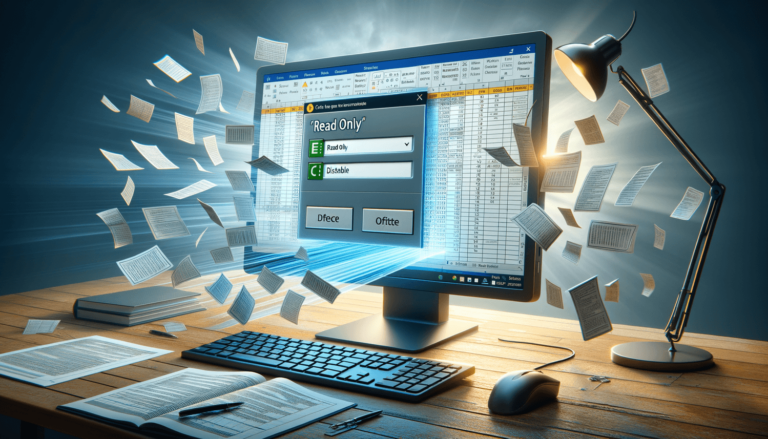

Many times when you open an Excel file, you may come across a message indicating that the document is in “Read-only” mode. This happens when the file is being accessed by another user or program, or if the file is saved in read-only mode. Operating in read-only mode restricts a user’s ability to edit and save changes to the document. However, it is sometimes necessary to remove the “Read-only” status to modify the Excel file and make changes. In this post, we will guide you on how to remove read-only Excel and resume full access to edit and save the file.
When it comes to working with Microsoft Excel, you may find that some files are in “Read-only” mode, limiting your ability to make changes. This can be frustrating when you need to edit or update a file, but fear not! We have compiled a straightforward guide on how to remove read-only Excel files so that you can go back to editing the document with ease.
The first method is to remove the read-only status by accessing the file properties.
Locate the file on your computer and right-click on it; then select “Properties” from the drop-down menu.
Once you have selected “Properties,” you will see a pop-up window showing information about the file. Under the “General” tab, you will see an option that says “Read-only.” Click to unselect the option and click “Apply” to save the changes.
After saving the changes, close the Properties window and re-open the file in Excel. You should now be able to edit and save changes to the document.
The second method is to save a copy of the read-only Excel file, which will remove the read-only status for the new document.
Open the read-only file in Microsoft Excel.
Select the “File” tab and click “Save As.” Choose a new file name for the copy, select a new location to save the file, and make sure that the file type is still “Excel Workbook (*.xlsx).” Then, click “Save.”
Close the read-only file and open the newly saved copy. You should now be able to edit and save changes to the file without any limitations.
Removing read-only Excel may seem like a daunting task at first, but it’s really quite simple. By following these two methods, you can remove the read-only status and edit your document as needed. So the next time you encounter a read-only Excel file, don’t panic – follow these simple steps and regain full editing capabilities!
Before we dive into how to remove read-only Excel, it’s essential to understand why your documents may be in read-only mode. Here are some reasons:
Now that you understand the reasons behind read-only Excel files, let’s go over some additional tips to help you work around them.
If you’re working in a shared network environment, it’s possible that you don’t have the appropriate permissions to modify the document. Contact your system administrator to ensure that you have the correct permissions to edit the file.
If you only need to make minor changes to the data in the file, you can copy and paste the information into a new document. This new document will not be in read-only mode and will allow you to edit data freely.
When you make significant changes to an Excel document, it’s always a good idea to save the updated version of the file as a new document. This way, you can keep the original unchanged, but still have access to the updated version.
External links or references in your document may also cause read-only mode. Check for external links in your document and make sure that they are correctly linked and accessible.
Working with read-only files can be a frustrating experience. However, with the tips outlined in this article, you can quickly remove read-only Excel files to edit documents as you please. From checking permissions to copying data into a new document, these tips will simplify the process for you.
Here are some common questions related to reading-only mode in Microsoft Excel:
If you’re unsure if your Excel file is in read-only mode, look for the “Read-only” tag in the Excel window’s title bar. Additionally, you may receive a warning message when attempting to make changes to the document.
Yes, you can still view the document in read-only mode. However, you cannot make any changes or modify the document.
No, you cannot remove read-only mode for a file that’s stored on a read-only location, such as a CD or DVD. You will need to save a copy of the document to a different location, such as your hard drive, to remove read-only mode.
The error message may indicate that you do not have sufficient permissions to modify the document. Make sure you have the administrator-level access required to change the document before attempting to make any changes.
Yes, you can remove read-only mode for multiple Excel files all at once. However, you will need to follow the same steps outlined in this article for each individual document.
Explore the world of Microsoft PowerPoint with LearnPowerpoint.io, where we provide tailored tutorials and valuable tips to transform your presentation skills and clarify PowerPoint for enthusiasts and professionals alike.

Your ultimate guide to mastering Microsoft Word! Dive into our extensive collection of tutorials and tips designed to make Word simple and effective for users of all skill levels.

Boost your brand's online presence with Resultris Content Marketing Subscriptions. Enjoy high-quality, on-demand content marketing services to grow your business.
